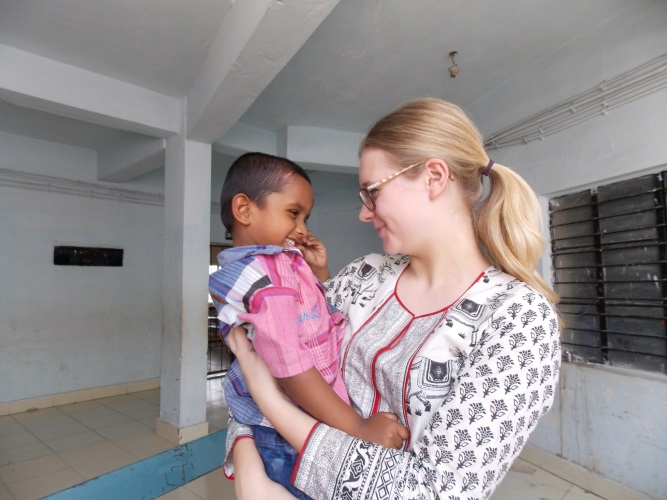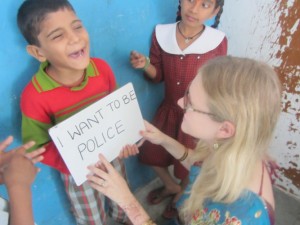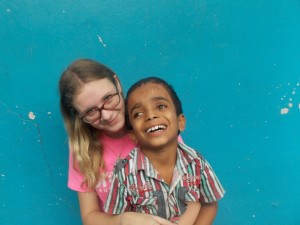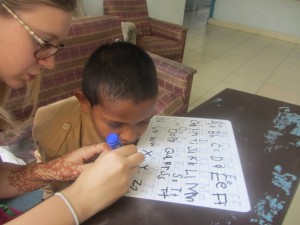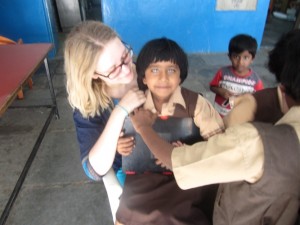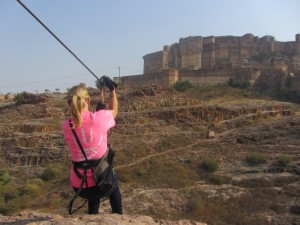Anna Garrett, Type One Diabetic, volunteer in India with Project Trust
Listen to Anna’s story
My disability and how it affects my everyday life
I suffer from Type One Diabetes and normally use an insulin pump but during my gap year I was medicating with around four or five injections a day.
Why I wanted to be a gap year volunteer
I didn’t feel ready for university and was looking for a chance to push myself and find my independence; living and volunteering abroad seemed a brilliant way to achieve this. I felt that a long term project was a much more worthwhile idea than just travelling because I could learn about the culture from the inside rather than getting very fleeting glimpses as I whisked through on my way to the next beautiful Indian holiday spot.
The story of my gap year
I decided to go abroad with Project Trust so attended one of their selection weeks on the Isle of Coll in the outer Scottish Hebrides; herding highland cattle and learning to Ceilidh. I was chosen and set about fundraising £5,400 that Project Trust require as well as £1,000 for personal travel which I mainly raised through raffles, sponsored events, part-time work and lots of help from family and friends. I was pleasantly surprised how easy fund-raising was; when people know you’re raising money for a good cause, they are very willing to help.
I spent 12 months working as an English teacher at a blind school in Hyderabad, India. Most of my time was spent teaching the younger classes as well as providing social care; taking Scottish dance classes and directing the school nativity. Accommodation was a single room with two beds, living on site with 500 blind students. I also travelled across India in my holiday time; riding elephants in Kerala, paragliding in the Himalayas and visiting the Taj Mahal.
How my disability was accommodated by my gap year organisation
When I started considering taking a gap year, the first thing I did was to call Project Trust and make sure that I would be able to go away. We decided that it would be possible for me to participate but only if certain safety precautions were followed; such as my attending an urban project so I would have local hospital access and be close to constant electricity (I need a fridge 24/7 to store my insulin). Project Trust has a fantastic support system; all volunteers have a desk officer in the UK, so I always had someone to contact if I was having any health concerns.
The way my disability was treated by the local community
The community were over-cautious with my diabetes, asking if I’d taken my medicine and insisting I needed to go and lie down. Giving my medicine in public was a problem, with strangers taking my photo or trying to touch my arms when I was injecting. I found it difficult. In every other way the school were completely accommodating of my presence (I was in the 8th set of volunteers) and made every effort to make me welcome. I received a lot of attention outside the school; my partner and I were the only white people in my town, which was intimidating at first but the attention is friendly and people were just curious.
My advice to others who have disabilities
Don’t see yourself as any different and go after what you want. Be brave, passionate and approach everything with an open mind. Enjoy every minute of it!
